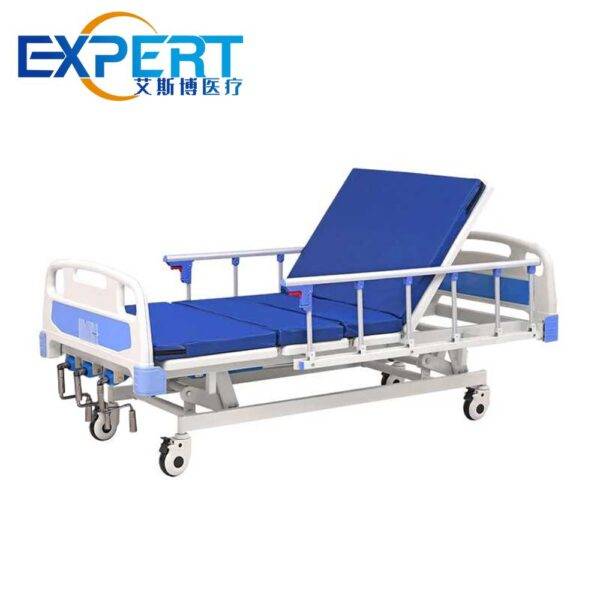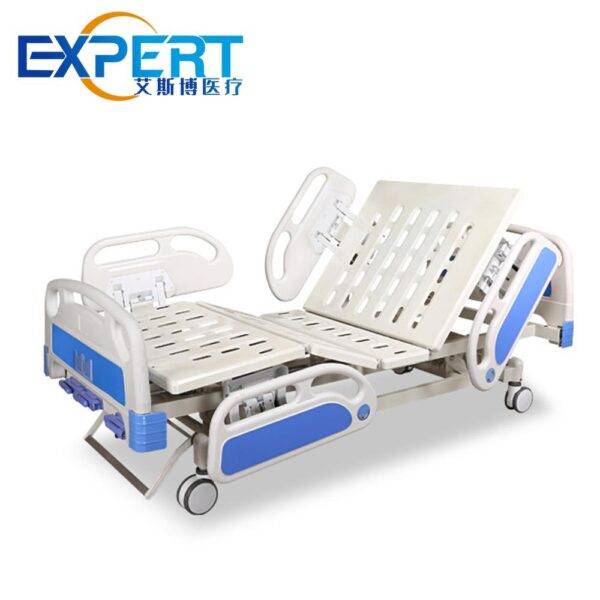Endereço
304 North Cardinal St.
Dorchester Center, MA 02124
Horas de trabalho
Segunda a sexta: 7h00 - 19h00
Fim de semana: 10h - 17h
Bem-vindo ao meu blog!
Antes de mergulharmos no conteúdo, adoraria que você se juntasse a mim nas minhas plataformas de mídia social, onde compartilho mais insights, interajo com a comunidade e posto atualizações. Veja como você pode se conectar comigo:
Facebook:https://www.facebook.com/profile.php?id=100071234835011
LinkedIn:https://www.linkedin.com/company/74943205/admin/dashboard/
YouTube:www.youtube.com/@shandongexpertmedicalequip4695
TikTok:www.tiktok.com/@expertmedical
Agora, vamos começar nossa jornada juntos. Espero que você ache o conteúdo aqui perspicaz, envolvente e valioso.

No mundo da saúde, a importância das camas hospitalares não pode ser exagerada. Elas são a base sobre a qual o atendimento ao paciente é construído, fornecendo conforto, suporte e funcionalidade para aqueles que precisam. Entre os vários tipos de camas hospitalares disponíveis, as camas hospitalares manuais têm sido um item básico há muito tempo, oferecendo uma solução confiável e versátil para instalações de saúde. Neste guia abrangente, vamos nos aprofundar no mundo das camas hospitalares manuais, explorando seus recursos, benefícios e considerações para profissionais de saúde e pacientes.
As camas hospitalares manuais são projetadas para fornecer uma gama de funcionalidades que atendem às diversas necessidades dos pacientes. Essas camas são normalmente operadas usando uma manivela ou alavanca, permitindo ajustes fáceis da posição, altura e outros recursos da cama. Alguns dos principais recursos das camas hospitalares manuais incluem:








As camas hospitalares manuais oferecem uma gama de benefícios que as tornam um bem valioso em ambientes de assistência médica. Algumas das principais vantagens dessas camas incluem:

Ao escolher camas hospitalares manuais para sua unidade de saúde, há vários fatores a serem considerados para garantir que você tome a melhor decisão para seus pacientes e equipe. Esses fatores incluem:

| Vantagens | Camas hospitalares manuais | Camas hospitalares elétricas |
|---|---|---|
| Custo | Menor custo inicial | Custo inicial mais alto |
| Manutenção | Manutenção mais simples | Manutenção mais complexa |
| Confiabilidade | Sem dependência de eletricidade | Dependência de eletricidade |
| Acessibilidade | Funcionalidade básica | Recursos e controles avançados |
| Segurança | Risco reduzido de problemas elétricos | Potencial para mau funcionamento elétrico |
| Ajustabilidade | Ajustes manuais básicos | Ajustes automatizados |
Esta tabela fornece uma comparação concisa das vantagens das camas hospitalares manuais em relação às camas hospitalares elétricas, auxiliando os profissionais de saúde a tomar decisões informadas com base em suas necessidades específicas e restrições orçamentárias.
Manual hospital beds remain an essential component of healthcare facilities, offering a reliable and cost-effective solution for patient care. By understanding the key features, benefits, and considerations surrounding these beds, healthcare professionals can make informed decisions that enhance patient comfort, safety, and the overall efficiency of their operations. As the healthcare landscape continues to evolve, the role of manual hospital beds will undoubtedly remain significant, serving as a versatile and dependable resource for caregivers and patients alike.
P: Qual é a diferença entre um cama hospitalar manual and an electric hospital bed?
R: A principal diferença entre uma cama hospitalar manual e uma cama hospitalar elétrica é como elas são operadas. Camas hospitalares manuais são operadas por manivelas, enquanto camas hospitalares elétricas são operadas por um controle remoto.
P: As camas hospitalares manuais são seguras?
R: Sim, camas hospitalares manuais são seguras quando usadas corretamente. No entanto, é importante seguir as dicas de segurança descritas acima.
Q: How much does a cama hospitalar manual custo?
R: O custo de uma cama hospitalar manual pode variar dependendo da marca, dos recursos e do varejista. No entanto, você normalmente pode esperar pagar entre $500 e $2.000 por uma cama hospitalar manual.
P: Onde posso comprar uma cama hospitalar manual?
R: Camas hospitalares manuais podem ser compradas em diversos varejistas, incluindo lojas de suprimentos médicos, varejistas on-line e agências de assistência domiciliar.
